Ping G30 Irons Vs Ping G Irons Comparison & Review 2023
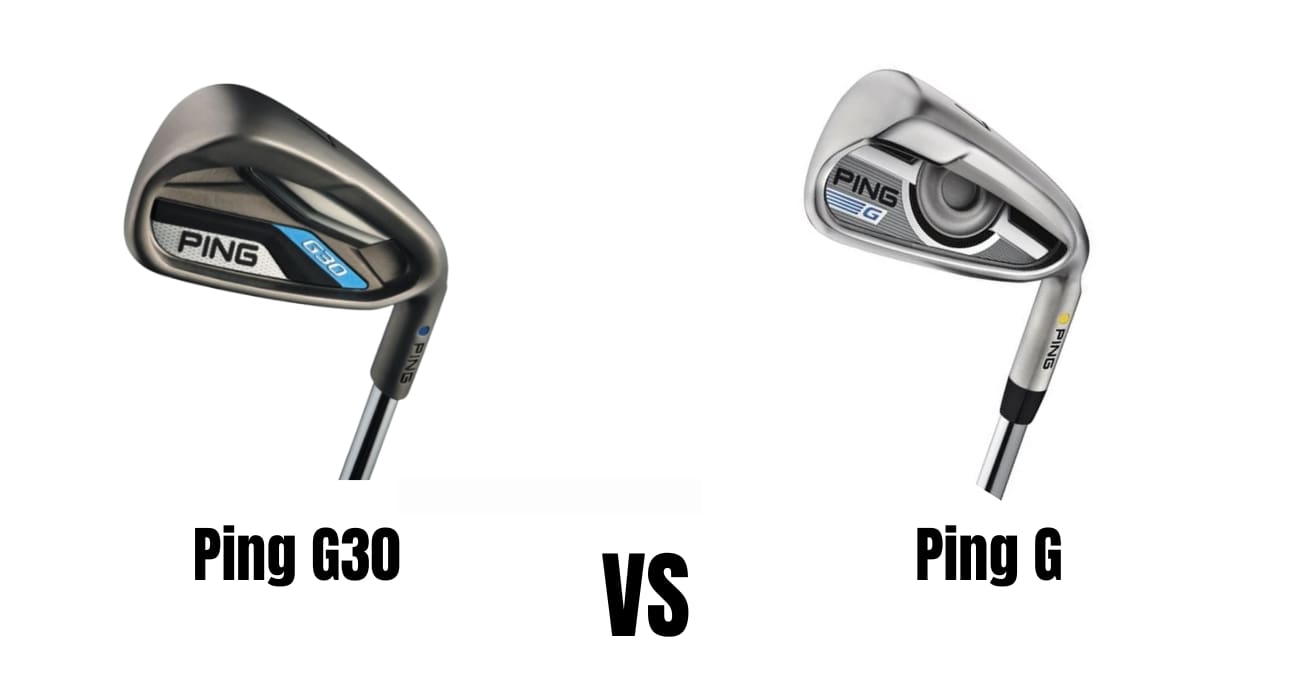
“The Ping G30 and the Ping G irons may be old news; but they are still some of the most effective game improvement irons on the market.”
If you are looking to lower your score and get a killer deal, be sure to read the following comparison review!
A lot of the staff here have experience with either the Ping G30 or the Ping G irons. And there is a running debate as to which are actually the better game improvement irons. At the end of the day, there are more similarities than there are differences between these two iron sets. So it’s understandable why the rivalry burns so hot.
So we wanted to settle the debate once and for all by testing the Ping G30’s side-by-side against the Ping G irons. And before we go any further, it should be noted that both of these sets are indeed game improvement irons. They are not designed for scratch players but rather for mid and high handicappers. With that caveat out of the way, let’s dive in.
Ping G Overview
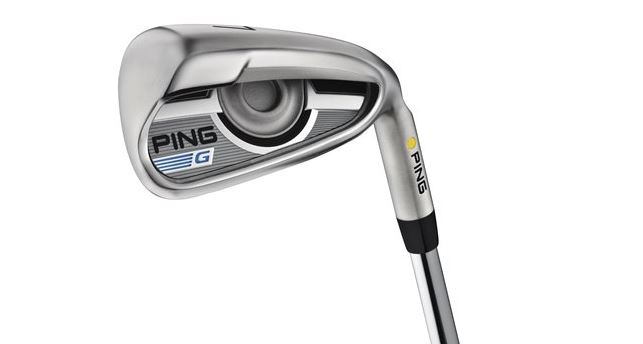
“The Ping G irons have an impressively deep cavity undercut.”
It looks like you can store a roll of dimes in the cavity undercut. But in a practical sense, the undercut helps get the ball up in the air. Behind the ball, the Ping G belies the look of a game improvement iron. The sole is tucked away, the topline is moderate and while there is some offset, it doesn’t sing and dance at you – great overall look behind the ball.
The sound is also pleasing. It doesn’t explode. Instead, the Ping G produces a low-frequency “click” that is at the same time understated and satisfying. The feel of these irons on a perfect strike is very active. You can feel the ball jump off the face. You know when you have mis-hit because the active feel is significantly deadened.
The Ping G’s are stainless steel cast irons and feature the COR-Eye technology that helps lower the CG in the back of the head.
Ping G30 Overview
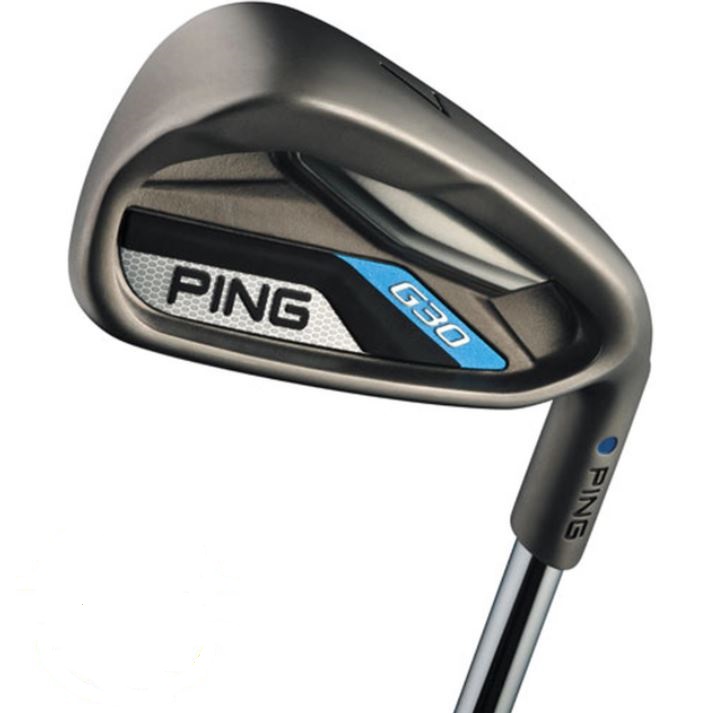
“The Ping G30 irons also look pretty nice; but for different reasons.”
The Ping G30 irons have a matte silver, almost gunmetal, finish. This is opposed to the mostly chrome finish of the Ping G irons. However, at address, you can see that the Ping G30 irons are chunkier. While the sole is still hidden at address, you can see that the topline is just a bit wider. The overall head profile is larger too.
Again, you get a pretty deep cavity undercut so launch is pretty simple with these irons. But instead of the COR-Eye badge in the back, you get the newer Custom Tuning Port which looks a bit more discreet; but still does the job of lowering the CG and enhancing overall feel/forgiveness.
The Ping G30’s are definitely louder than the Ping G’s at impact; but the sound is still a lower-frequency click.
Overview Conclusion
“Now we talk about which irons were longer, straighter and performed better.”
While we liked the looks of the Ping G irons more, the Ping G30’s simply played longer. We were averaging a carry distance of 255.4 yards with the 7-iron of the G30 set compared to 248.8 yards with the Ping G 7-iron. Dispersion was almost identical but again, the Ping G30’s won the day. With the Ping G30’s we hit almost all of our balls within 5 yards of each other.
The forgiveness factor seemed to also be identical between these two irons so in the end, we liked the performance of the G30’s a bit more.
Ping G Irons First Impressions
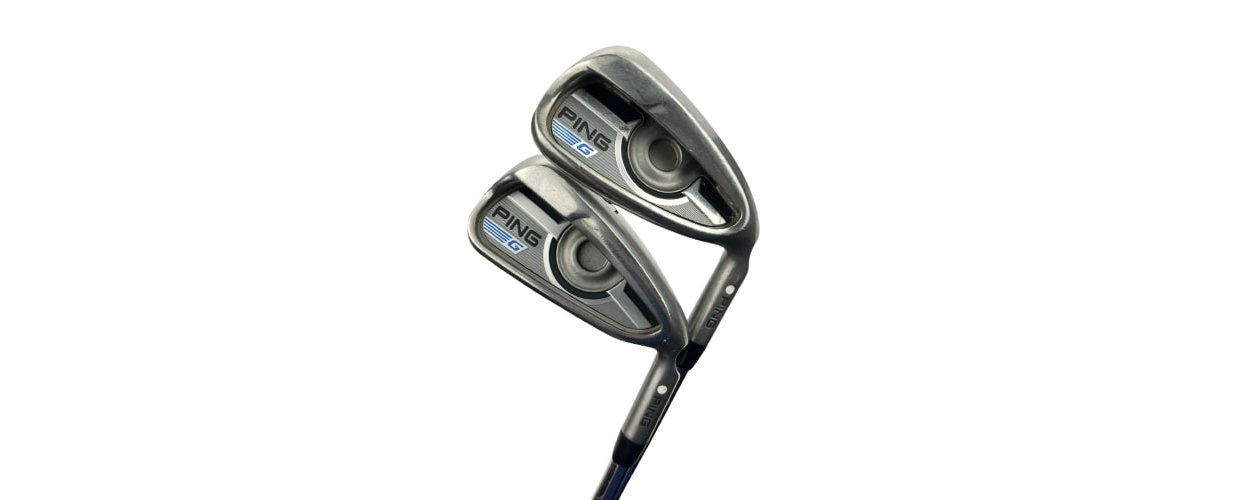
“We really liked how Ping struck a good balance between player’s looks and GI performance.”
These irons look great, they launch easy and they produce a strong trajectory that will likely improve your carry distance.
Ping G Key Technology
Notched Hosel
The notched hosel makes it easier to adjust the loft and face angle of these irons.
COR-Eye
This is essentially a weight placement that pulls the CG low and back.
Undercut Cavity
Basic but effective. The deep undercut cavity makes it easier to launch the ball high and out.
Ping G30 First Impressions
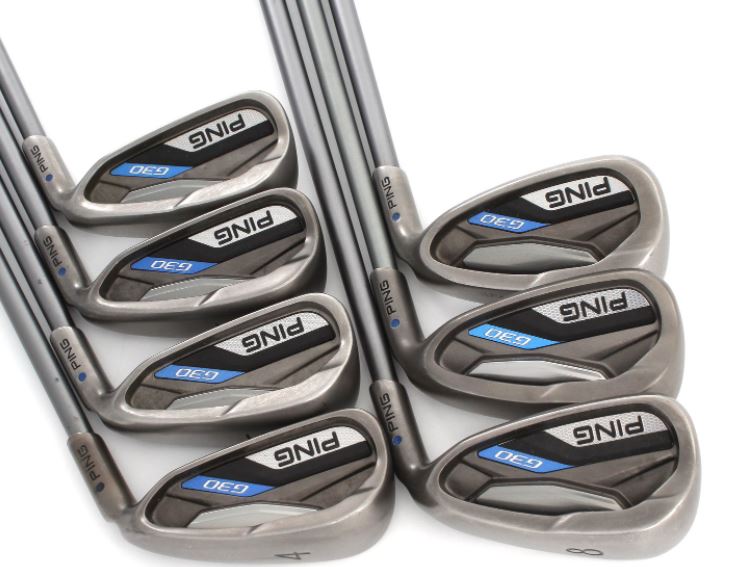
“We liked the forgiveness of these irons right away.”
Especially on low-face shots. Low-face shots seemed to be flying as far and as fast as perfect strikes.
Ping G30 Key Technology
Custom Tuning Port
This also pulls the CG low and far back in the head.
High MOI
The slightly longer blade lengths means more mass which helps reduce twisting on off-center strikes.
Notched Hosel
The Ping G30’s also feature a notched hosel for more precise adjustment.
Ping G Loft & Lie
| Club | Loft | Lie |
| 4-iron | 21 | 60.56 |
| 5-iron | 24 | 61.50 |
| 6-iron | 27 | 62.44 |
| 7-iron | 30.5 | 63.38 |
| 8-iron | 35 | 64.13 |
| 9-iron | 40 | 64.88 |
Ping G30 Loft & Lie
| Club | Loft | Lie |
| 4-iron | 21 | 59.06 |
| 5-iron | 24 | 60 |
| 6-iron | 27 | 60.94 |
| 7-iron | 30.5 | 61.88 |
| 8-iron | 35 | 62.81 |
| 9-iron | 40 | 63.75 |
Who Should Buy the Ping G Irons?
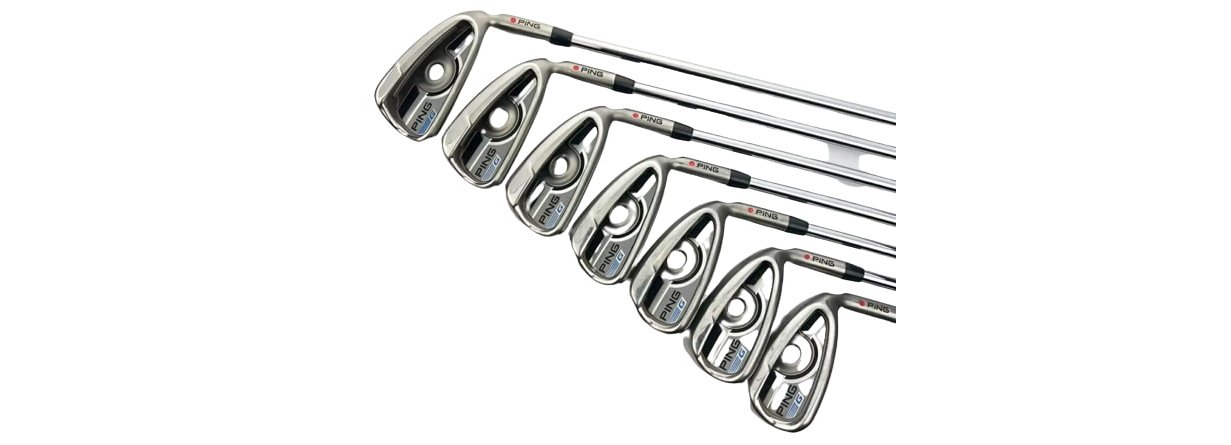
“The Ping G irons would be a good choice for 13-18 handicap players who really want to tighten up their dispersion.”
If you want to look better on the course, these irons will help you do so. The tight dispersion is almost effortless and remains even on mis-hits. You should also consider these irons if you prefer a sleeker, more traditional look.
Distance: 96/100
Forgiveness: 96/100
Workability: 94/100
Overall Performance: 95/100
Value: 97/100

Overall Score: 96/100
Check Out More Reviews Here:
Who Should Buy the Ping G30 Irons?
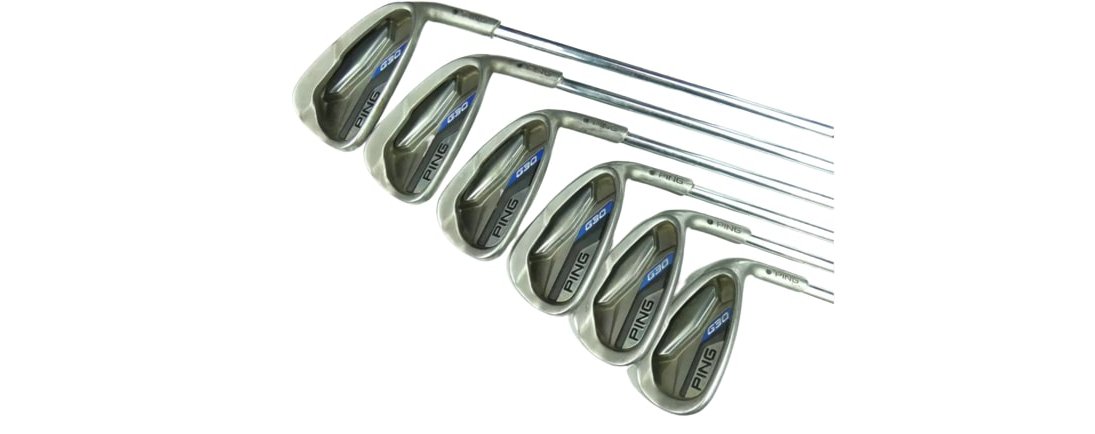
“The Ping G30’s may even be viable for single-digit handicappers.”
They launched long and high at the same time so better players will be able to stick more greens with their 5-irons. For that reason, we would say they are good for players in the 8-16 handicap range.
Distance: 97/100
Forgiveness: 97/100
Workability: 94/100
Overall Performance: 96/100
Value: 97/100




